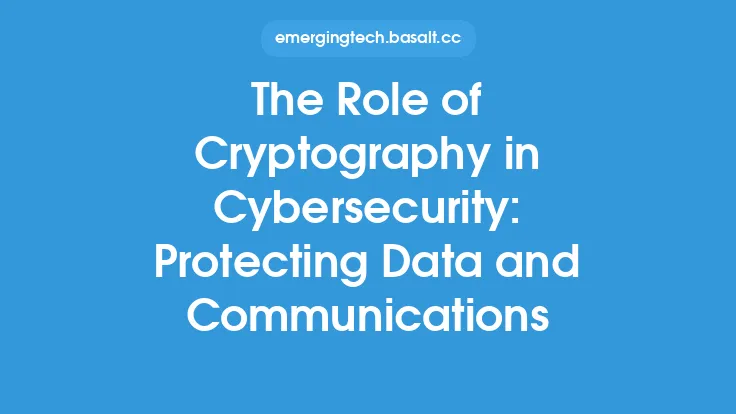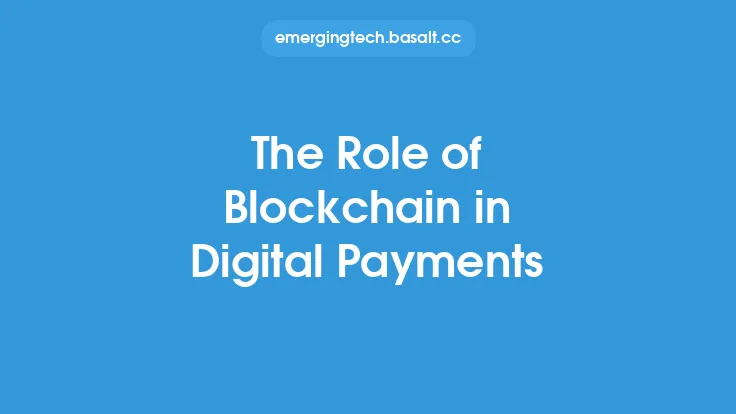The rise of digital payments has transformed the way we conduct financial transactions, offering unparalleled convenience, speed, and efficiency. However, this shift has also introduced new security risks, making it essential to prioritize the protection of transactions in the digital age. As digital payments continue to grow in popularity, it is crucial to understand the security measures that underpin these transactions and the technologies that enable secure payments.
Introduction to Digital Payments Security
Digital payments security refers to the practices, technologies, and protocols designed to safeguard financial transactions conducted through digital channels, such as online banking, mobile payments, and contactless transactions. The primary goal of digital payments security is to prevent unauthorized access, use, or manipulation of sensitive financial information, ensuring that transactions are processed securely and efficiently. This involves a multi-layered approach, incorporating various security measures, including encryption, authentication, and tokenization.
Security Threats in Digital Payments
The digital payments landscape is vulnerable to various security threats, including phishing, malware, and distributed denial-of-service (DDoS) attacks. Phishing attacks involve tricking users into divulging sensitive financial information, such as login credentials or credit card numbers, through fake websites or emails. Malware, on the other hand, can compromise payment systems, allowing hackers to steal sensitive data or disrupt transaction processing. DDoS attacks, which overwhelm payment systems with traffic, can also compromise the availability and integrity of digital payments.
Encryption and Digital Payments Security
Encryption plays a critical role in digital payments security, as it enables the secure transmission of sensitive financial information over public networks. Encryption algorithms, such as Advanced Encryption Standard (AES) and Secure Sockets Layer/Transport Layer Security (SSL/TLS), convert plaintext data into unreadable ciphertext, making it difficult for unauthorized parties to intercept and exploit sensitive information. In digital payments, encryption is used to protect data in transit, ensuring that transactions are conducted securely and efficiently.
Authentication and Authorization in Digital Payments
Authentication and authorization are essential components of digital payments security, as they verify the identity of users and ensure that only authorized parties can initiate transactions. Authentication methods, such as passwords, biometrics, and one-time passwords (OTPs), verify the identity of users, while authorization protocols, such as 3D Secure and Secure Authentication, ensure that transactions are legitimate and authorized. The use of multi-factor authentication (MFA) and behavioral biometrics can further enhance the security of digital payments, making it more difficult for hackers to compromise transactions.
Tokenization and Digital Payments Security
Tokenization is a security technology that replaces sensitive financial information, such as credit card numbers, with unique tokens or references. This approach enables the secure storage and transmission of sensitive data, reducing the risk of data breaches and unauthorized access. In digital payments, tokenization is used to protect sensitive information, such as credit card numbers and expiration dates, making it more difficult for hackers to exploit this data.
Secure Communication Protocols in Digital Payments
Secure communication protocols, such as SSL/TLS and HTTP Secure (HTTPS), play a critical role in digital payments security, as they enable the secure transmission of sensitive financial information over public networks. These protocols use encryption and authentication to ensure that transactions are conducted securely and efficiently, protecting against eavesdropping, tampering, and man-in-the-middle (MITM) attacks.
Digital Payments Security Standards and Regulations
Digital payments security is governed by various standards and regulations, including the Payment Card Industry Data Security Standard (PCI DSS) and the General Data Protection Regulation (GDPR). These standards and regulations provide a framework for ensuring the secure processing, storage, and transmission of sensitive financial information, protecting against data breaches and unauthorized access. Compliance with these standards and regulations is essential for organizations that process digital payments, as it helps to maintain trust and confidence in the digital payments ecosystem.
Best Practices for Digital Payments Security
To ensure the secure processing of digital payments, organizations should adopt best practices, such as implementing robust security protocols, conducting regular security audits, and providing employee training and awareness programs. Additionally, organizations should stay up-to-date with the latest security threats and vulnerabilities, ensuring that their security measures are effective and efficient. By prioritizing digital payments security, organizations can protect their customers' sensitive financial information, maintain trust and confidence in the digital payments ecosystem, and ensure the long-term success of their business.
The Future of Digital Payments Security
The future of digital payments security will be shaped by emerging technologies, such as artificial intelligence (AI), machine learning (ML), and the Internet of Things (IoT). These technologies will enable the development of more sophisticated security measures, such as predictive analytics and behavioral biometrics, making it more difficult for hackers to compromise digital payments. Additionally, the increasing adoption of blockchain technology and cryptocurrencies will introduce new security challenges and opportunities, requiring organizations to adapt and evolve their security measures to stay ahead of emerging threats.
Conclusion
Digital payments security is a critical component of the digital payments ecosystem, as it enables the secure processing, storage, and transmission of sensitive financial information. By understanding the security measures that underpin digital payments, including encryption, authentication, and tokenization, organizations can protect their customers' sensitive financial information and maintain trust and confidence in the digital payments ecosystem. As the digital payments landscape continues to evolve, it is essential to prioritize digital payments security, adopting best practices and staying up-to-date with the latest security threats and vulnerabilities to ensure the long-term success of digital payments.





